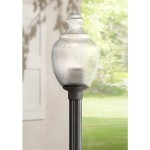How To Paint Outdoor Wicker Furniture
Wicker furniture adds a touch of classic elegance to any outdoor space. However, exposure to the elements can cause fading, cracking, and general wear. A fresh coat of paint can revitalize wicker furniture, extending its lifespan and enhancing its aesthetic appeal. This article provides a comprehensive guide to painting outdoor wicker furniture, ensuring a durable and beautiful finish.
1. Preparing the Wicker
Thorough preparation is crucial for a successful paint job. Begin by cleaning the furniture with a mild detergent solution and a stiff brush to remove dirt, grime, and cobwebs. Rinse thoroughly with a garden hose and allow the wicker to dry completely, preferably in direct sunlight for several hours. Loose or peeling paint should be scraped away using a paint scraper or putty knife. Sanding the wicker lightly with fine-grit sandpaper can create a better surface for paint adhesion, particularly if the existing finish is glossy.
2. Choosing the Right Paint
Selecting the appropriate paint is essential for durability and weather resistance. Exterior-grade paints, specifically formulated for outdoor use, are recommended. Options include acrylic latex, oil-based, and chalk paints. Acrylic latex paints offer good adhesion, flexibility, and mildew resistance, making them a popular choice for wicker. Oil-based paints provide excellent durability but require longer drying times and may yellow over time. Chalk paints offer a matte finish and excellent coverage but may require a sealant for added protection.
3. Gathering Necessary Supplies
Having the right tools on hand ensures a smooth and efficient painting process. Gather the following supplies: drop cloths or old sheets to protect the surrounding area, painter's tape for masking off sections, a paintbrush specifically designed for wicker (a natural bristle brush is often preferred), a paint sprayer (optional, but recommended for larger pieces), paint thinner or mineral spirits (for cleaning oil-based paint), and a container for mixing paint.
4. Applying the Primer (Optional)
While not always necessary, applying a primer can improve paint adhesion and provide a more uniform finish, particularly if the wicker is heavily weathered or if the existing paint is significantly darker or lighter than the new color. Choose an exterior-grade primer compatible with the chosen paint type. Apply the primer evenly using a brush or sprayer, allowing it to dry completely according to the manufacturer's instructions before applying the paint.
5. Painting the Wicker
Once the primer is dry (if used), begin painting the wicker furniture. If using a brush, apply thin, even coats, working the paint into the crevices and weaving of the wicker. Avoid overloading the brush, which can lead to drips and runs. A sprayer can provide a more even coat, particularly on intricate wickerwork. Hold the sprayer at a consistent distance and apply multiple thin coats rather than one thick coat. Allow each coat to dry thoroughly before applying the next.
6. Using a Sprayer (Optional)
Using a paint sprayer can significantly speed up the painting process, particularly for larger pieces or intricate wicker designs. A sprayer delivers a fine, even coat of paint, reaching all the nooks and crannies of the wicker. Ensure the sprayer is properly adjusted and maintain a consistent distance from the furniture while spraying. Thin, multiple coats provide a smoother finish and prevent drips. Practice on a less visible area first to familiarize yourself with the sprayer and adjust the settings as needed.
7. Drying and Curing
Allow the painted wicker furniture to dry completely according to the paint manufacturer’s instructions. Drying times can vary depending on the type of paint, humidity, and temperature. Avoid placing the furniture in direct sunlight or extreme temperatures while it dries. Once dry, the paint may require a curing period, during which the paint fully hardens and reaches its maximum durability. The curing time can range from a few days to several weeks, depending on the paint type. Refer to the manufacturer's instructions for specific drying and curing times.
8. Applying a Sealant (Optional)
For added protection, consider applying a clear sealant once the paint is fully cured. A sealant can enhance the paint's durability, protect against UV damage, and make the furniture easier to clean. Choose an exterior-grade sealant compatible with the paint type. Apply the sealant evenly using a brush or sprayer, following the manufacturer’s instructions.
By following these steps, individuals can effectively revitalize their outdoor wicker furniture, extending its life and enhancing its appearance for years to come. Careful preparation, appropriate paint selection, and proper application techniques contribute to a durable and beautiful finish.

How To Re Coat Wicker Furniture Shades Of Blue Interiors

How To Spray Paint Resin Wicker Chairs If You Dare

How To Spray Paint Wicker Refresh Restyle

How To Spray Paint Resin Wicker Chairs If You Dare

How To Spray Paint Wicker Furniture

How To Paint Wicker Furniture Quickly And Easily H2obungalow

How To Spray Paint Outdoor Resin Wicker Furniture Makeover Patio

How To Paint Outdoor Furniture That Will Last Joyful Derivatives

How To Spray Paint Wicker Furniture

Painting Wicker Furniture Hints Tips Solutions To Paint Like A Pro
Related Posts







